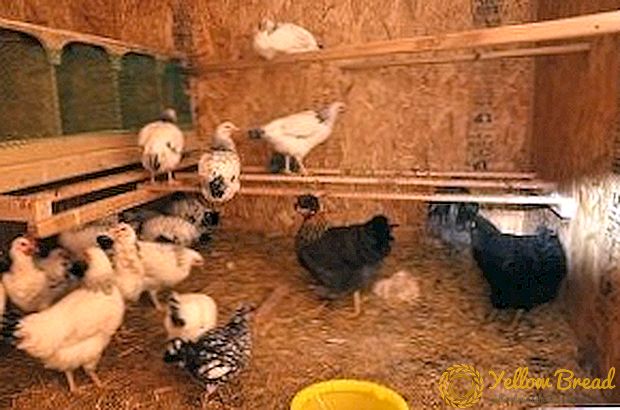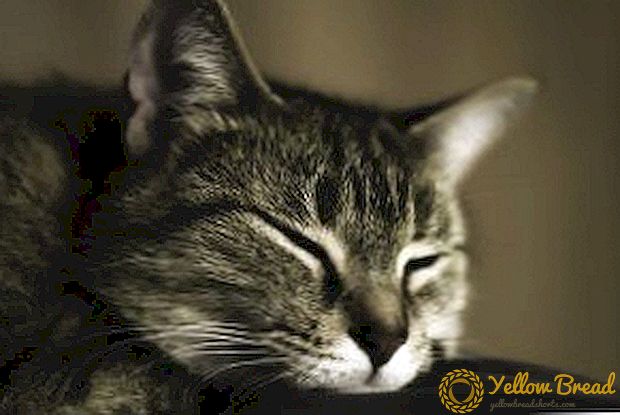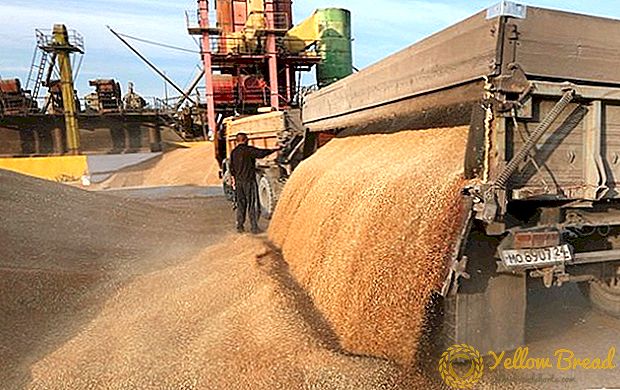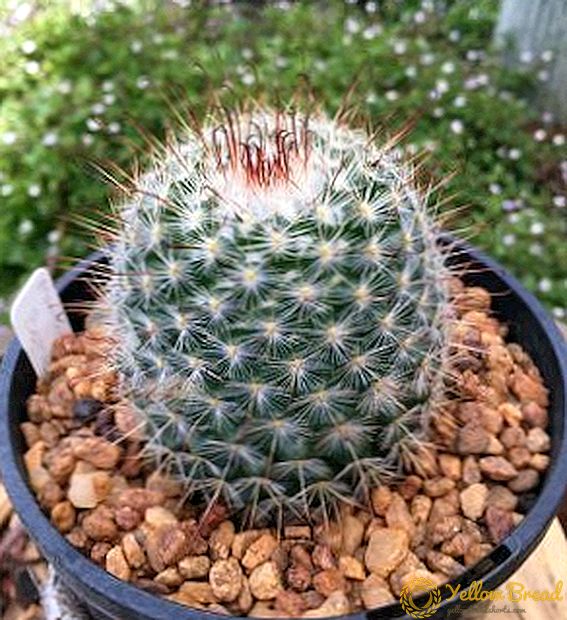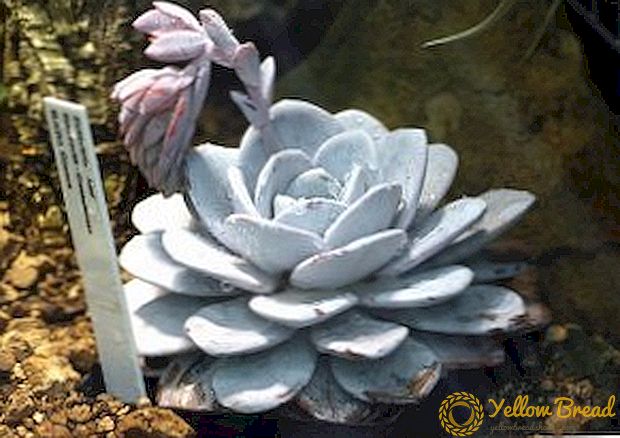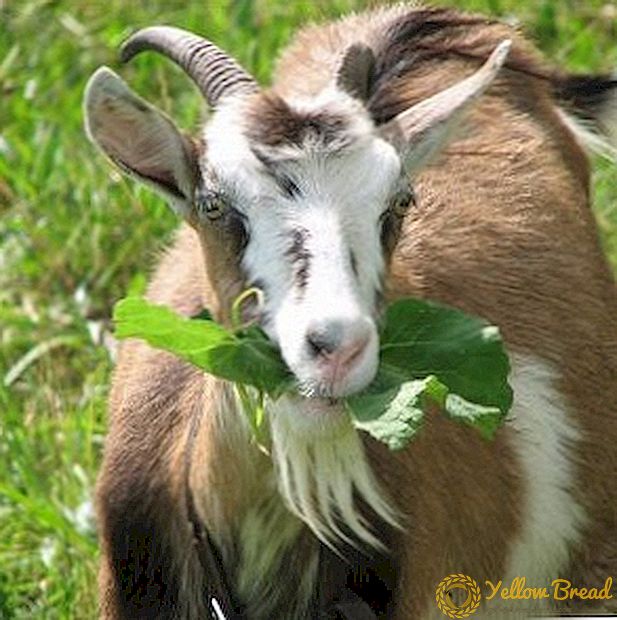 Acute infectious diseases can cause damage not only to large farms, but to small farmsteads. Therefore, it is important to recognize their symptoms in time and start treatment immediately, especially since many of them are dangerous for people.
Acute infectious diseases can cause damage not only to large farms, but to small farmsteads. Therefore, it is important to recognize their symptoms in time and start treatment immediately, especially since many of them are dangerous for people.
In this review, we consider what is foot and mouth disease, what is its danger and how to deal with it.
- Etiology of the disease
- First symptoms
- Course of the disease
- Treatment of sick animals
- Prevention
- Is foot and mouth disease dangerous for humans?
Etiology of the disease
The causative agent of this disease is one of the smallest viruses in size - Dermaphilus, containing RNA. Despite its small size, it has great virulence (ability to infection).  Dermatotropy is pronounced - most often the disease begins with infection of skin areas or damaged mucous membranes in animals. It is distributed through raw milk, meat and excretion products.
Dermatotropy is pronounced - most often the disease begins with infection of skin areas or damaged mucous membranes in animals. It is distributed through raw milk, meat and excretion products.
In addition to eating milk or uncooked meat for food, the contact route of infection is dangerous for a person - veterinarians know that by touching an infected area, there is a risk of “catching” such a disease. This also applies to mucus particles. Fortunately, man is not particularly susceptible to his action, which cannot be said about animals (especially artiodactyls).
 The FMDV virus rather quickly (4-5 minutes) dies during boiling, does not tolerate sunlight. Alkaline and formalin solutions also help in the fight against it.
The FMDV virus rather quickly (4-5 minutes) dies during boiling, does not tolerate sunlight. Alkaline and formalin solutions also help in the fight against it.There are 8 strains of this virus. In our conditions, the main types are A and O, other pathogens rarely occur.
First symptoms
The incubation period for a virus is usually 2–4 days, but it is often delayed. For example, in pigs it can last 7-8 days, and in cows up to 2-3 weeks. There is no apparent cause for concern during this period, although the disease progresses rapidly. 
Alarms are:
- general animal weakness and loss of appetite;
- short-term fever;
- prolonged diarrhea;
- animals begin to creep on their forelimbs, limp (this is typical if foot and mouth disease affected cattle);
- lethargy gum;
- increased salivation;
- in some cases, the animal is unable to open its mouth.
Course of the disease
The disease is acute. In adult animals, it usually takes a benign form, while the malignant (it is an atypical course) is extremely rare.  In different animals, the effect of the infection takes into account the characteristics of the species and breed.
In different animals, the effect of the infection takes into account the characteristics of the species and breed.
Let's start with cattle. After the expiration of the latent period (1-3 days, but sometimes from 7 to 20 days), the animal completely refuses to feed, the pulse quickens, the gum stops. At 2-3 days of the active phase inside the lips, aphas (syphae) appear on the mucous membrane of the cheeks, tongue and jaw edges.
In difficult cases, such formations are visible on the udder and between the hoofs. The defeat of all limbs is rare, more often it is a limp on one pair of legs.
 On the limbs you can see the same aphthae and swelling. They also burst and heal after 4-8 days. If the lesion is large in size, then there is a risk of purulent diseases, perhaps even corneal detachment.
On the limbs you can see the same aphthae and swelling. They also burst and heal after 4-8 days. If the lesion is large in size, then there is a risk of purulent diseases, perhaps even corneal detachment.Aphthae in dairy cows inflame the nipple canals, sick quarters work with impairments. This is manifested in a change in the composition of milk: it becomes slimy and bitter. If the nipple canal is blocked by scabs, then mastitis begins. At the same time, productivity decreases to 60-75%, and it takes months to restore it.
Especially dangerous is the disease like foot and mouth disease for calves. They do not suffer from aphtha, but the disease is accompanied by severe disruption of the gastric pathways. If help is late, a case may begin.
The "pure" type of virus stops its activity after 7-10 days. With background complications, the disease lasts much longer, up to a month. These are mainly problems associated with gastric and lactic highways.  With an atypical form, it is even more difficult: the recovering animal abruptly “rents”, refuses to eat, its hind limbs are paralyzed. Such a drop can occur 6-10 days after the onset of the disease. It strikes the heart, and mortality, reaching up to 20-40%, in such cases is associated with its stopping.
With an atypical form, it is even more difficult: the recovering animal abruptly “rents”, refuses to eat, its hind limbs are paralyzed. Such a drop can occur 6-10 days after the onset of the disease. It strikes the heart, and mortality, reaching up to 20-40%, in such cases is associated with its stopping.
Adults are ill for a long time: from a week to 20-25 days. For piglets, foot and mouth disease is deadly at all (loss is at least 60%), the first two days of virus activity are considered the most dangerous.  With goats a little easier.After 2-7 days of the latent period, appetite disappears, the animal is in a fever, it starts limping. At the same time it is difficult for him to open his mouth, you can hear the gnashing of teeth.
With goats a little easier.After 2-7 days of the latent period, appetite disappears, the animal is in a fever, it starts limping. At the same time it is difficult for him to open his mouth, you can hear the gnashing of teeth.
Aphthae appear on hoofs, lower jaw, lips and udder.
From them sticky liquid flows. Goats are more resistant to foot and mouth disease, and complications are rare.
Full recovery occurs in two weeks. 
After 2-3 days of the latent period, the sheep limp, occasionally stop the gum and move a little. The temperature can reach 41-41.5 ° C.
In the case of them, the aphthae are small, burst quickly and heal early. The lesion area is the same: ungulates and rim, gums, tongue and lips, upper jaw to the teeth.
Sheep recover after 10-12 days. Lambs often die because of complications such as septicemia (damage to tissues and the circulatory system).

Treatment of sick animals
Due to the variety of manifestations of the virus, the industry does not produce universal drugs (with the exception of immunolactone, and that is not always suitable). Therefore, treatment is reduced to the elimination of symptoms.
Food - easily digestible: in summer it is grass, in winter they give soft hay or high-quality silage. 
If the foot-and-mouth disease in animals goes in the usual form, the treatment measures are reduced to the following actions:
- Oral cavity rinse with weak solutions of potassium permanganate (0.1%) or furatsilina (0.5%). Acetic acid is also suitable at a concentration of 2%.
- For severe lesions of the oral mucosa, ointments based on copper sulfate, anesthesin or novocaine are taken. Fish oil is also useful.
- Clean the limbs daily. The hooves and beaters are treated with a mixture of tar and fish oil in equal proportions. To consolidate the result, the animal is carried out through sawdust, which are saturated with tar. For large farms, formalin baths (5% solution) are made for the same purpose.

At severe forms diseases do the following manipulations:
- Strongly affected parts of the limbs are smeared with iodine. After clearing the claw, the dead tissue is removed and the wound is burned with powder (½ of permanganate and streptocide), and then bandaged.
- Aphthae on the udder are treated with Novocain-Tripoflavin ointment on the basis of petroleum jelly. Propolis also interferes with it (15% of the volume). Syntomycin ointment also helps.
- If the complication is manifested in sepsis, a weak novocainic solution of 0.5% is administered intravenously. Take 0.5 ml of the mixture per 1 kg of weight.
- Use the flour mash, which is poured through a probe daily, 15-20 liters.
- To strengthen the heart muscle, a mixture is prepared: in 400 ml of distilled water, add 6 g of bromokalium, 10 ml of valerian tincture and 15 ml of lily of the valley. This is a single dose.

Prevention
Foot and mouth disease, like any viral disease, is easier to prevent than to cure.
The main place is given to vaccination. Most often injected saponin composition in the amount of 1 ml. It begins to operate in 10-14 days, reaching a protective peak a maximum in a month.
Immunity lasts from 6 months to a year. Cattle revaccinate once a year, while pigs have to be given two vaccinations each year.
Age is also taken into account: in calves, for example, "maternal" immunity is very strong and for the first 3 weeks it can interrupt the action of the vaccine. In goats and lambs, it is much weaker, and the pigs are practically not protected. 
The remaining preventive measures are largely traditional:
- regular cleaning of the premises with the change of litter material;
- placement of livestock on the rules (no cramping);
- periodic inspection of the animal, pay special attention to the oral cavity, the condition of the skin, wool and hoofed plates;
- the use of high-quality food, water and additives;
- restriction of contact with already infected animals (for example, do not display on one pasture).
Is foot and mouth disease dangerous for humans?
As we remember, such a virus is reluctant to be transferred to people, although its danger should not be minimized.  The risk group includes people who work directly with animals: veterinarians, milkmaids, shepherds, slaughterhouse workers and meat processing plants. But in the farmstead, one can become infected through contact or eating meat and milk from the sick "beast".
The risk group includes people who work directly with animals: veterinarians, milkmaids, shepherds, slaughterhouse workers and meat processing plants. But in the farmstead, one can become infected through contact or eating meat and milk from the sick "beast".
Incubation period Lasts 2-4 days (there are cases when it comes to two weeks). In the transition to the acute form, such the symptoms:
- temperature increase (up to 39 ° С);
- chills or fever;
- weakness and pronounced muscle pain;
- loss of appetite;
- after 2-3 days, vomiting begins, the eyes turn red, there is a burning sensation in the mouth, sometimes cramps are felt during urination.
 At the same time, aphas appear in the mouth, in the palate and gums, tongue or lips.In some cases, they can be seen on the feet. They are small (up to 4 mm), but the number can reach several dozen. At first, these ovals are light, then the liquid darkens.
At the same time, aphas appear in the mouth, in the palate and gums, tongue or lips.In some cases, they can be seen on the feet. They are small (up to 4 mm), but the number can reach several dozen. At first, these ovals are light, then the liquid darkens.After a day or two, they begin to burst, erosion begins. The patient is hard to swallow, chew and talk, salivation increases. The temperature returns to normal, but there is pain in the lymph nodes.
After 3-6 days, the tears are tightened, leaving no scars. Recovery takes up to 2 weeks. For this period, the victim is placed in the hospital.
Treatment comes down to enhanced skin care. It happens that food is introduced through a probe. Antibiotics do not apply - against such viruses they simply do not exist.
The skin is rubbed with various ointments, the best help is the florenal, interferon and oxolane compounds. Oral hygiene involves frequent rinsing infusions of sage or chamomile. A weak novocaine solution (0.25%) or manganese (1%) is also suitable. You have to wash your eyes: 2% boric acid in the form of a solution to help.Sodium sulfacyl 30% - it drops, relieves pain and unpleasant itching.  If necessary, use anesthetics, antihistamine drugs or drugs to strengthen the cardiovascular group.
If necessary, use anesthetics, antihistamine drugs or drugs to strengthen the cardiovascular group.
Overall prophylaxis implies the control of animals, and medical - this is the heat treatment of meat, boiling milk (5 minutes) and the periodic change of working clothes. Remember that products from infected animals are dangerous, regardless of the stage of the disease.
We have learned how dangerous foot and mouth disease is and how to prevent it. We hope that this information will be useful for owners of small farmsteads. Let your pets be healthy and enjoy high productivity!

